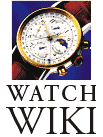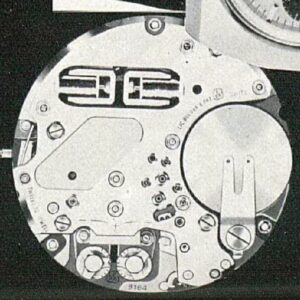 |
Brand: | ESA, ETA | 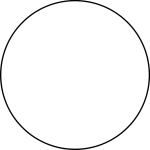
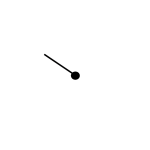
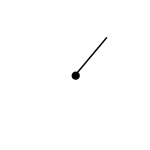
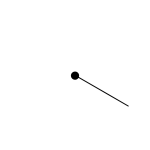


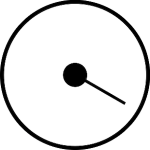

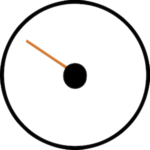
|
|---|---|---|---|
| Family: | |||
| Height: | 7.95 mm | ||
| Jewels: | |||
| Reserve: | hours | ||
| Frequency: | 300 Hz | ||
| Winding: | Battery | ||
| Diameter: | 30.4 mm (13 ligne) | ||
| Complications: | 2-Button, Cam Switching Chronograph, Chronograph, Date, Day, Hacking Seconds, Modular Chronograph, Quick Date Correction, Quick Day Correction, Vertical Clutch Chronograph | ||
| Hands: | 12 Hour Chronograph Hand at 6:00, 30 Minute Chronograph Hand at 9:00, Central Hour Hand, Central Minute Hand, Central Seconds Hand, Date Window at 3:00, Day Window at 3:00, Small Seconds Hand at 12:00 | ||
| Distinguishing Technical Characteristics | |||||||||||
|---|---|---|---|---|---|---|---|---|---|---|---|
| Production: 1972 – 1976 | |||||||||||
| 1910s | 1920s | 1930s | 1940s | 1950s | 1960s | 1970s | 1980s | 1990s | 2000s | 2010s | 2020s |
Cal. 9210 is a tuning fork chronograph movement with day and date produced by Ebauches SA under license from Bulova. It was the only tuning fork chronograph movement ever produced by any company. Based on the Bulova Accutron design and designed by Accutron designer Max Hetzel, Cal. 9210 was one of the ESA “Mosaba” family of movements and was included in the “Swissonic” line of electronic movements in the early 1970s.
Introduced in 1972, Cal. 9210 is closely related to the no-date Cal. 9160, released in 1968 but rarely seen, and date-only Cal. 9162, released in 1969, and contemporary day-date Cal. 9164.
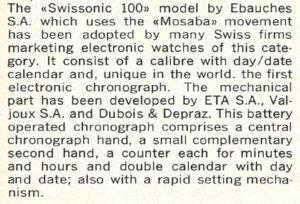
The chronograph subdial layout (6-9-12) is similar to the contemporary Valjoux 7750 series but with the running seconds and 30 minute counter subdials swapped. The module was designed and constructed by Valjoux and Dubois Depraz, which also worked on many other chronograph and complicated movements at the time. It is highly modular, and the top plate and components are identical to the basic ESA 9160. The main plate is specific to the chronograph movement, however.
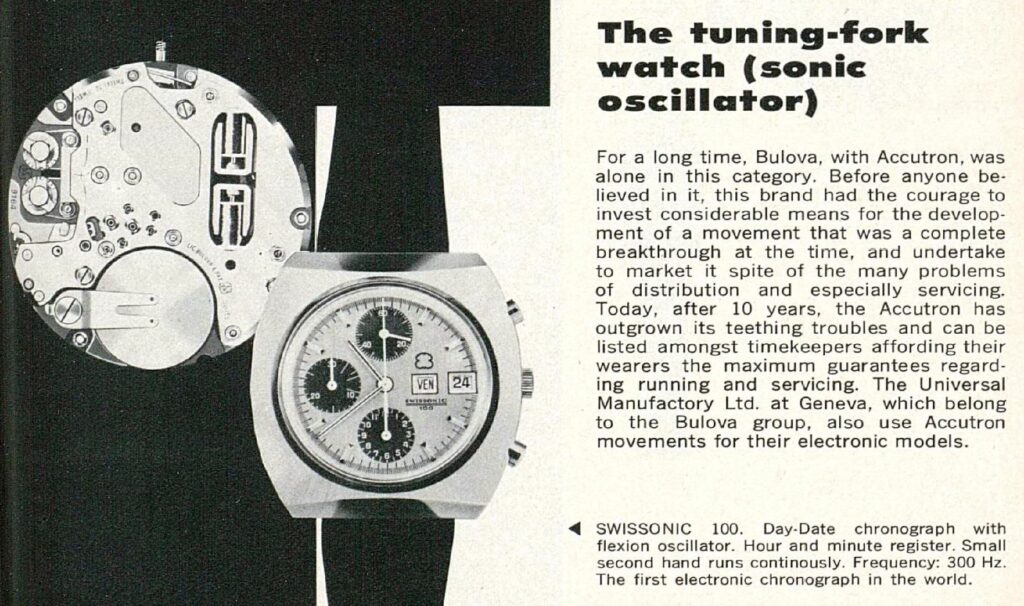
The chronograph uses a vertical clutch and is designed to be left running for hours, or even continually. One unusual aspect of Cal. 9210 is that the day and date wheels move smoothly rather than jumping forward. This was done for two reasons: The tuning fork wheel train was designed for a constant load and might have been disrupted by the changing torque of a conventional date mechanism, and there was no room to implement a jumping date.
It was used by a few Swiss companies and carried different brand names and calibre numbers:
- Baume & Mercier “Tronosonic Chrono”
- Certina “Chronolympic C-Tronic” Cal. 749
- Longines “Ultronic” Cal. 749.2
- Omega “Speedsonic f300” Cal. 1255
